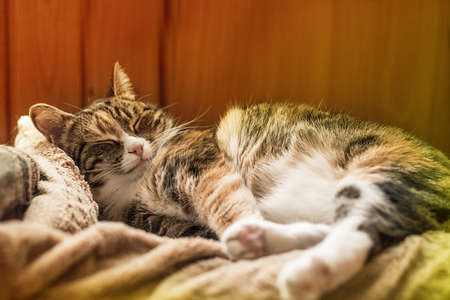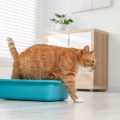Understanding the Needs of British Cat Owners
When selecting the ideal cat litter for British homes, it’s important to first understand the unique requirements of UK cat owners. The British climate, distinctive home layouts, and lifestyle habits all play a role in determining which cat litter is most suitable. For example, with the UK’s generally damp weather and frequent rain, odour control and moisture absorption become essential features in a quality litter. Many British homes, particularly in urban areas like London or Manchester, tend to have smaller living spaces compared to other countries. This means that dust control and easy clean-up are crucial considerations to maintain a tidy environment. Additionally, many households may not have access to outdoor space, making indoor litter solutions even more vital.
| Factor | UK-Specific Consideration |
|---|---|
| Climate | High humidity and dampness require superior odour and moisture control. |
| Home Size | Smaller flats/houses need low-dust, compact, and easy-to-store litter options. |
| Lifestyle | Busy routines demand low-maintenance litters with simple disposal solutions. |
| Pet Habits | Many cats are indoor-only, increasing the importance of effective litter choices. |
By recognising these factors, British cat owners can better assess which products will keep their pets happy while maintaining a pleasant home environment. In the following sections, we will break down key product types available on the UK market and help you make an informed choice tailored to your specific needs.
Types of Cat Litter Available in the UK Market
When choosing the best cat litter for British homes, its crucial to understand the different types available across the UK. Each variety offers unique benefits and is suited to specific needs, lifestyles, and preferences. In British shops, you will typically encounter four main types: clumping, non-clumping, biodegradable, and scented cat litter. Here’s a detailed overview to help you make an informed decision.
Clumping Cat Litter
Clumping cat litter is highly popular in the UK due to its convenience and ease of cleaning. It forms solid lumps when wet, making it simple to remove soiled sections without having to change the entire tray. This type is often made from bentonite clay and is ideal for busy households looking for low-maintenance options.
Non-Clumping Cat Litter
Non-clumping varieties absorb moisture but do not form clumps. These are usually more affordable and can last longer before needing a complete change. However, they may require more frequent tray cleaning to prevent odours, especially in multi-cat homes.
Biodegradable Cat Litter
Increasingly popular with environmentally conscious pet owners, biodegradable cat litters are made from natural materials like wood pellets, recycled paper, or corn. They break down easily after disposal and are often compostable, offering a sustainable alternative for British households looking to reduce their environmental footprint.
Scented Cat Litter
Scented litters help mask unpleasant smells, making them a good choice for smaller flats or homes where odour control is a priority. However, some cats may be sensitive to fragrances, so it’s important to monitor your pet’s reaction if you choose this option.
Comparison Table of Common UK Cat Litter Types
| Type | Main Features | Best For | Environmental Impact |
|---|---|---|---|
| Clumping | Forms solid clumps, easy removal | Busy households, easy cleaning | Moderate (usually clay-based) |
| Non-Clumping | Absorbs moisture, does not clump | Budget-friendly, occasional use | Varies (can be clay or natural) |
| Biodegradable | Eco-friendly materials, compostable | Sustainable living, eco-conscious owners | Low (natural breakdown) |
| Scented | Masks odours with fragrance | Odour-sensitive environments | Varies (depends on base material) |
By understanding these main varieties found in British shops, you can select the cat litter that best fits your home environment and personal values. Whether prioritising convenience, cost-effectiveness, sustainability or odour control, there’s an ideal option waiting for every UK cat owner.

3. Key Factors in Choosing Cat Litter for British Homes
When selecting cat litter for your UK home, it’s vital to consider several essential factors that impact both your household and the environment. The right choice ensures a cleaner, healthier space for you and your feline companion, while also aligning with British living standards and regulations.
Odour Control
One of the most important considerations for British cat owners is effective odour control. With many UK homes being compact or featuring open-plan layouts, a litter that traps unpleasant smells is crucial to maintain a fresh indoor environment. Look for litters specifically formulated to neutralise ammonia and other common odours.
Dust Levels
Low-dust formulas are especially important in British homes, where closed windows during colder months can make dust accumulation problematic. Dust-free or low-dust litters help prevent respiratory issues for both cats and humans, and keep surfaces cleaner.
Ease of Cleaning
Convenience is key in busy UK households. Clumping litters are popular because they simplify removal of soiled areas, reducing overall maintenance time. Some products are also designed to minimise tracking outside the litter box—a frequent concern for pet owners.
Suitability for Flats or Houses
| Litter Type | Best For Flats | Best For Houses |
|---|---|---|
| Clumping Clay | ✔ (easy cleaning) | ✔ (larger bins possible) |
| Wood Pellet | ✔ (natural scent) | ✔ (compostable waste) |
| Silica Gel | ✔ (excellent odour control) | — |
| Bentonite Clay | — | ✔ (ample storage space) |
| Recycled Paper | ✔ (lightweight, flushable) | — |
Consider Space and Disposal Options
If you live in a flat with limited space or communal bins, choose lightweight or flushable options to ease disposal. Detached homes may offer more flexibility for bulk storage or composting biodegradable litter.
British Environmental Regulations
Sustainability is increasingly significant across the UK. Many councils encourage eco-friendly waste disposal and discourage non-biodegradable materials in landfill. Opt for plant-based or recycled paper litters to align with environmental guidelines and reduce your ecological footprint.
Summary Table: Essential Criteria Comparison
| Criteria | Description |
|---|---|
| Odour Control | Masks unpleasant smells; ideal for shared spaces. |
| Dust Levels | Lowers airborne particles; better air quality indoors. |
| Ease of Cleaning | Simplifies routine maintenance; saves time. |
| Home Suitability | Catered to flats or houses based on space/disposal needs. |
| Environmental Impact | Biodegradable/eco-friendly options reduce landfill waste. |
Selecting the right cat litter by these criteria ensures comfort, cleanliness, and compliance with local expectations in British homes.
4. Comprehensive Review of Top Cat Litter Brands in the UK
When it comes to selecting cat litter for British homes, understanding the pros and cons of leading brands is essential. Below, we compare some of the most popular products found in UK supermarkets and pet stores, focusing on performance, price, odour control, and overall value.
Top Cat Litter Brands Compared
| Brand | Type | Pros | Cons | Approximate Price (£) |
|---|---|---|---|---|
| Catsan Hygiene Plus | Non-Clumping Mineral | Excellent odour control Widely available Low dust |
Doesnt clump Can be tracked outside litter box |
5.00 (5L) |
| Felix Tidy Cats Clumping | Clumping Clay | Strong clumping action Easy to scoop Controls smells well |
Heavier to carry Not biodegradable |
7.50 (10L) |
| Nature’s Calling | Natural/Walnut Shells | Eco-friendly Flushable Minimal dust |
Scent can be unusual More expensive |
9.99 (6L) |
| Sainsbury’s Lightweight Cat Litter | Lightweight Clay Blend | Lighter to handle Good absorption Affordable |
Lesser odour control May scatter easily |
3.00 (5L) |
| Pets at Home Wood Pellet Litter | Pine Wood Pellets | Sustainable material Low tracking Natural pine scent |
Larger pellets may not suit all cats Needs frequent changing for odour control |
5.49 (15L) |
Main Considerations for British Pet Owners
Odour Control and Ease of Cleaning
Clumping litters such as Felix Tidy Cats are ideal for busy households, making daily cleaning much more efficient. Non-clumping options like Catsan require full tray changes more often but are gentle for sensitive paws.
Sustainability and Environmental Impact
If eco-friendliness is your priority, Nature’s Calling and Pets at Home Wood Pellet Litter offer sustainable alternatives that reduce landfill waste.
Cost versus Value for Money
Sainsbury’s Lightweight Cat Litter is budget-friendly but may not perform as well in high-traffic homes. In contrast, premium brands tend to cost more but deliver superior performance and convenience.
Summary Table: Which Litter Suits Your Needs?
| Lifestyle/Need | Recommended Brand(s) |
|---|---|
| Busiest homes, minimal mess | Felix Tidy Cats Clumping or Catsan Hygiene Plus |
| Sustainability-focused households | Nature’s Calling or Pets at Home Wood Pellet Litter |
| Tight budgets, good value required | Sainsbury’s Lightweight Cat Litter |
Selecting the right cat litter involves balancing odour control, ease of use, environmental impact, and budget—key factors for every British cat owner seeking a comfortable and clean home environment.
5. Tips for Transitioning Your Cat to a New Litter
Switching your cats litter can be a sensitive process, especially for felines set in their ways. British homes often have limited space and specific hygiene concerns, so a smooth transition is vital for both pets and owners. Here are practical, behaviour-focused steps for introducing a new cat litter with minimal stress:
Behaviour-Based Training Recommendations
- Gradual Introduction: Start by mixing a small amount of the new litter with your cat’s current litter. Over 7-10 days, gradually increase the proportion of the new litter while reducing the old one.
- Observe Reactions: Watch your cat’s body language and toilet habits closely. Look out for signs of reluctance, such as avoiding the tray or toileting elsewhere.
- Positive Reinforcement: Encourage desired behaviour by praising or offering treats when your cat uses the tray after each change in litter ratio.
Practical Steps for UK Homes
| Step | Description |
|---|---|
| 1. Preparation | Choose a quiet spot in your home for the litter tray; keep it away from food and water bowls as per UK animal welfare guidance. |
| 2. Mix Litters | Begin with 75% old litter and 25% new; slowly shift to 100% new over 7-10 days. |
| 3. Monitor Cleanliness | Scoop daily and do a full tray clean weekly to maintain hygiene—especially important in smaller British flats or terraced houses. |
| 4. Provide Options | If possible, offer two trays: one with old litter and one with new, allowing your cat to choose at their own pace. |
Troubleshooting Common Issues
- If your cat refuses to use the new litter, revert to a higher ratio of the old type and slow down the transition.
- Avoid scented litters initially, as many UK cats prefer unscented or natural options.
Summary
The key to success is patience and observation. Every cat is unique—by following these practical steps and using gentle behavioural training, you can help your feline friend adjust comfortably to their new litter, ensuring cleanliness and harmony in your British home.
6. Frequently Asked Questions from UK Cat Owners
How should I dispose of used cat litter in the UK?
Disposing of cat litter correctly is important for both hygiene and environmental reasons. In the UK, general guidance suggests that most types of used cat litter should be placed in your general waste bin, not your recycling or garden waste bins. Flushing cat litter down the toilet is strongly discouraged, as it can cause blockages and harm water systems.
Cat Litter Disposal Methods Comparison
| Litter Type | General Waste | Compost Bin | Recycling Bin |
|---|---|---|---|
| Clumping Clay | ✔️ | ❌ | ❌ |
| Silica Gel/Crystal | ✔️ | ❌ | ❌ |
| Biodegradable (Wood/Paper) | ✔️ | Only if pet waste accepted* | ❌ |
*Check with your local council before composting biodegradable litter, as most home composting guidelines do not recommend adding pet waste.
Are there any eco-friendly disposal options for British households?
Some biodegradable litters made from recycled paper or wood pellets are marketed as compostable. However, UK councils rarely accept pet waste in food or garden waste bins. If you have a dedicated pet waste compost bin (not used for edible plants), you may be able to compost small amounts of natural, non-clumping litter. Always verify with your local authority first.
What are typical British recycling norms for cat litter packaging?
The packaging of cat litter products often varies:
- Paper bags: Usually recyclable via household paper recycling.
- Plastic bags: Check for the recycling symbol; some can go in carrier bag collection points at supermarkets.
- Cardboard boxes: Widely recycled in household collections.
Litter Packaging Disposal Guide
| Packaging Type | Council Recycling Bin | Supermarket Collection Point | General Waste |
|---|---|---|---|
| Kraft Paper Bag | ✔️ | ❌ | ❌ |
| Shrink-Wrapped Plastic Bag | ❌ (usually) | ✔️ (if PE/LDPE) | ✔️ (if not recyclable) |
| Cardboard Box | ✔️ | ❌ | ❌ |
Troubleshooting Common Litter Box Issues in the UK Context
I’m struggling with odour control – what are my options?
If odour is an issue, consider switching to a high-absorbency clumping clay or silica-based litter. Regular scooping and washing the tray weekly with mild detergent also helps. For multi-cat homes, provide one box per cat plus one extra where possible.
The litter tracks everywhere – how can I minimise this?
Select low-dust or heavier pellet litters to reduce tracking. Placing a textured mat outside the tray will catch stray granules. Covered trays with entry mats can also help contain messes.
I want to use a covered tray – are they popular in Britain?
Cats in British homes often adapt well to covered trays, which help with privacy and odour containment. However, always ensure proper ventilation and that the tray is large enough for your cat to move comfortably.


